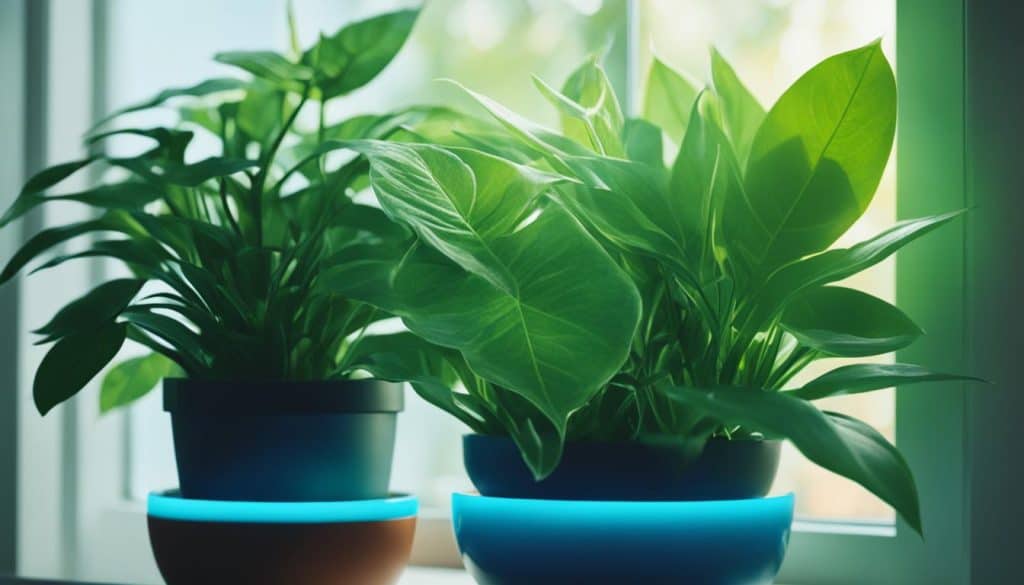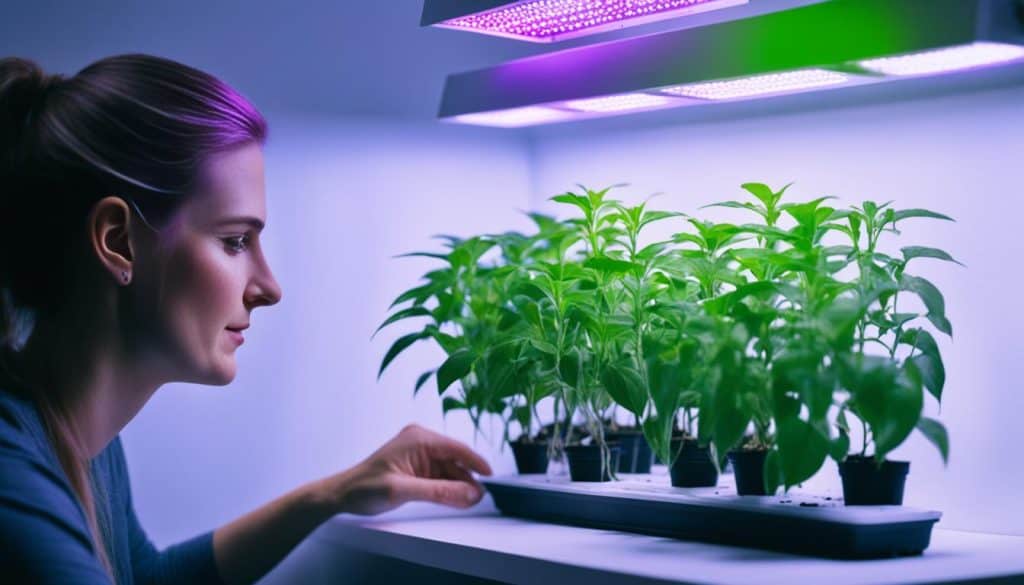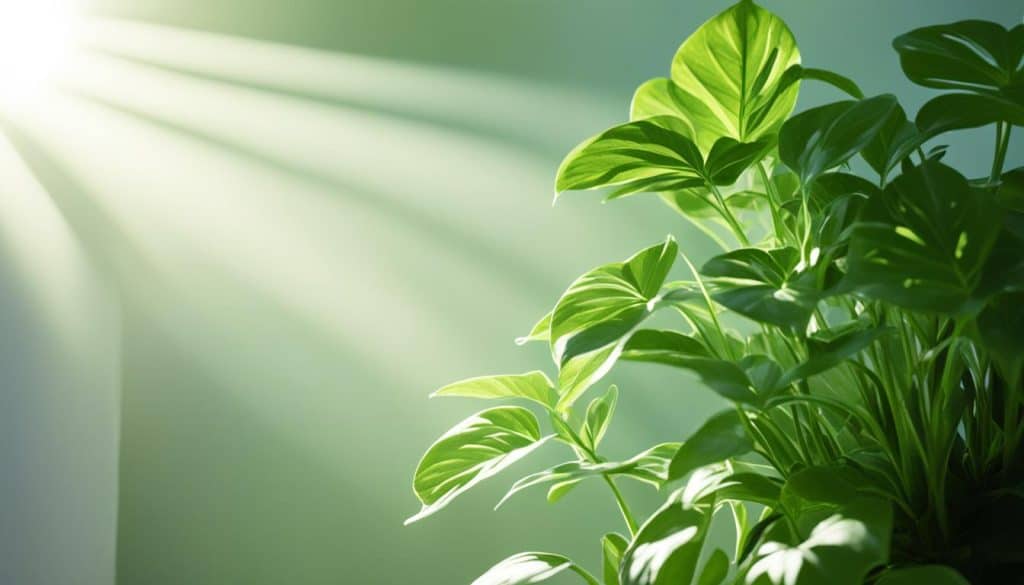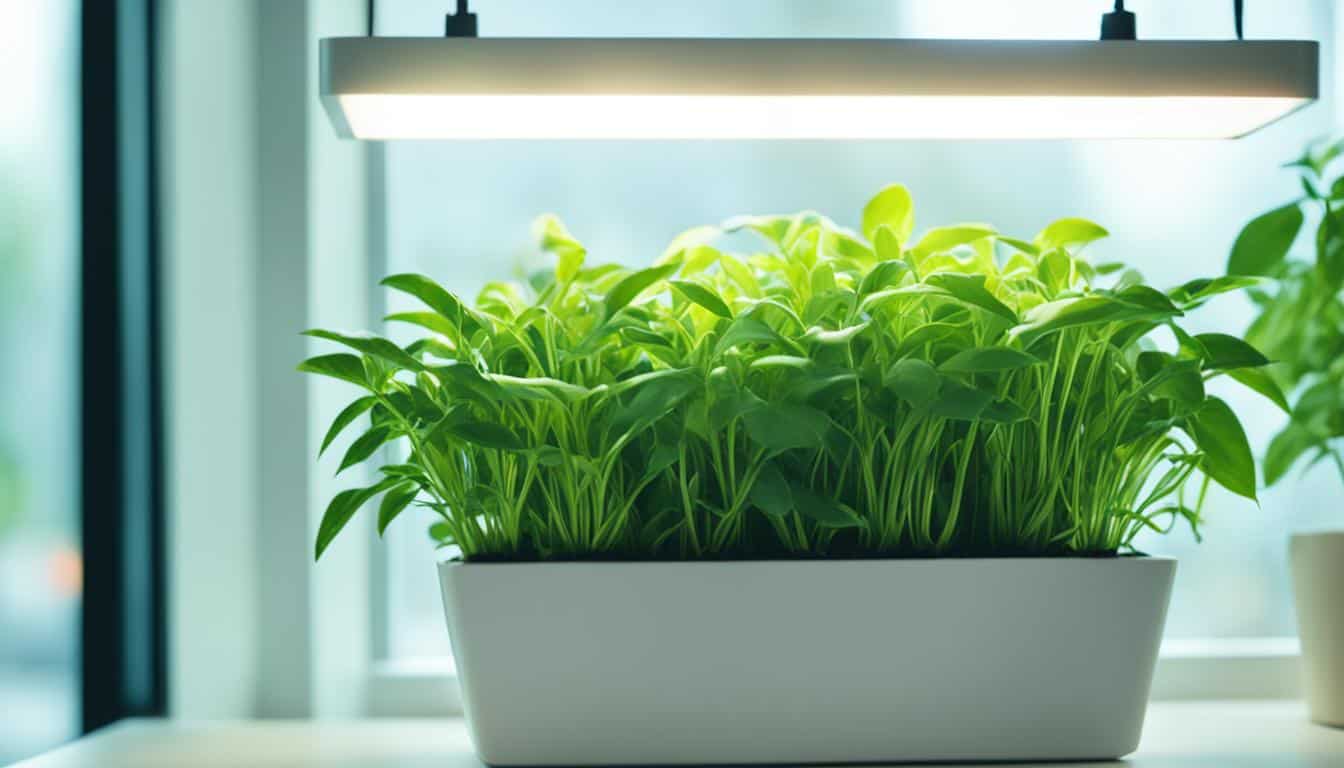Are you an indoor gardening enthusiast looking for the perfect recipe for thriving plants? Combining natural light and grow lights could be the game-changer you’ve been searching for. But how exactly can you strike the right balance between the two?
Let’s delve into the world of indoor gardening and discover the secrets of harmonizing natural light with artificial illumination for the utmost care of your plants.
In this article, we’ll explore the art of combining natural light and grow lights to ensure the optimal growth and health of your indoor garden. By understanding your plants’ needs, getting to know your home’s light, and choosing the right grow lights, you’ll have the tools to create a truly enchanting environment for your green companions.
So, are you ready to take your indoor garden to the next level? Let’s embark on this journey together and discover the magical combination of nature and technology that will breathe new life into your plants.
Understanding Your Plant’s Needs
Just like people, plants have their own preferences when it comes to light. Some plants love basking in the sun all day, while others prefer a bit of shade. By getting to know what kind of light your plants love the most, you can better cater to their needs.
When it comes to your plant’s needs, it’s important to understand their favorite type of weather and light preferences. Some plants, like succulents and cacti, thrive in bright sunlight and prefer drier conditions. They are often native to arid regions and have adapted to receive maximum sunlight. On the other hand, plants like ferns and peace lilies prefer indirect light and higher humidity levels.
Understanding your plant’s light preferences will help you create the ideal environment for them to grow and thrive.
Take the time to research the specific lighting requirements for each type of plant you have in your indoor garden. Consider factors such as the intensity, duration, and quality of light they need. This information will guide you in providing the best possible conditions for their growth.
To help you visualize the different light preferences of plants, here is a list that categorizes them based on their light requirements:
- Full Sun: Plants that require at least 6 hours of direct sunlight per day, such as tomatoes, roses, and marigolds.
- Partial Sun/Partial Shade: Plants that thrive with a mix of direct sunlight and shade, like hydrangeas, hostas, and impatiens.
- Shade: Plants that prefer minimal sun exposure and thrive in shady areas, such as ferns, mosses, and begonias.
Understanding your plant’s light preferences will help you make informed decisions about their placement and the types of lighting you provide. By mimicking their preferred conditions as closely as possible, you can create an environment that promotes healthy growth and blooming.
Getting to Know Your Home’s Light
When it comes to nurturing your indoor garden, understanding the natural light available in your home is essential. By taking the time to get to know your home’s light, you can find the prime real estate where your plants will thrive. Whether it’s sunbeams that flood a particular corner or a shaded area perfect for shade-loving plants, each spot in your home holds unique potential for your green buddies.
Start by observing different areas of your home throughout the day and note the variations in natural light intensity. Some spots may receive direct sunlight, while others may be bathed in a softer, diffused light. Understanding these different lighting conditions will help you choose the right plants for each area and create an environment tailored to their needs.
Creating a plan and mapping out the areas with varying light conditions will allow you to strategically place your plants where they will receive the optimal amount of light. This will not only enhance their growth but also add beauty and liveliness to your home.

“By identifying and making the most of your home’s natural light, you’re essentially providing prime real estate for your plants to flourish.” – Expert Gardener
Choosing the Right Grow Light
When it comes to providing optimal lighting for your indoor garden, choosing the right grow light is essential. Different types of grow lights offer unique benefits and can complement the natural light your plants receive. Let’s explore the options available and discover how they can enhance your plant’s growth.
Types of Grow Lights
There are several popular types of grow lights to consider:
- Fluorescent Grow Lights: These lights are a popular choice for indoor gardening due to their energy efficiency and wide range of spectrums available. They are suitable for all stages of plant growth.
- High-Intensity Discharge (HID) Grow Lights: HID lights are known for their intensity and ability to promote rapid growth. They come in two types: Metal Halide (MH) for the vegetative stage and High-Pressure Sodium (HPS) for the flowering stage.
- LED Grow Lights: LED lights have gained popularity in recent years due to their energy efficiency, long lifespan, and ability to produce specific wavelengths of light. They offer a wide spectrum for all growth stages and allow for customizable lighting.
Complementing Natural Light
When choosing a grow light, it’s important to consider the natural light your plants receive. Some plants thrive with supplemental lighting, while others don’t require it. Assess the specific light requirements of your plants and select a grow light that complements their needs.
“By choosing the right grow light, you can create a harmonious balance between natural and artificial light, providing your plants with the ideal conditions for growth.”
Positioning and Timing
The placement of your grow light is crucial for ensuring uniform light distribution among your plants. Position the light source at an appropriate height and angle for optimal coverage. Additionally, consider using a timer to ensure consistent lighting hours and to mimic the natural day-night cycle.
Comparison of Grow Lights
| Grow Light Type | Pros | Cons |
|---|---|---|
| Fluorescent | Energy-efficient, versatile spectrum options | Less intensity, limited coverage area |
| HID | High intensity, promotes rapid growth | Higher energy consumption, heat production |
| LED | Energy-efficient, customizable spectrum | Higher upfront cost |
As you can see, each type of grow light offers its own advantages and disadvantages. Consider your specific plant’s needs, your budget, and the size of your indoor garden when making your decision. Remember, choosing the right grow light is key to promoting healthy and vibrant plant growth.
Timing is Everything
Just like planning a party, timing is everything when combining natural light and grow lights. Proper timing ensures that your plants receive the right amount of light throughout the day, even when natural light fades. By using a timer, you can create an ideal lighting schedule that promotes uninterrupted growth and keeps your plants thriving.
When it comes to timing, the key is to understand your plant’s needs and synchronize the use of grow lights with the natural light cycle. As the sun sets and natural light decreases, the grow lights will automatically come on, providing a consistent light source for your plants.
Using a timer eliminates the need for manual adjustments and ensures that your plants receive the necessary light regardless of the time of day. It also helps to create a more natural environment for your plants, mimicking the gradual transition from daylight to darkness.
Timing the use of your grow lights allows your plants to experience a seamless blend of natural and artificial light, promoting healthy growth and development.
When setting up the timer, consider the specific lighting requirements of your plants. Some plants may need more or less light than others, so it’s important to tailor the timing to their needs. Research the recommended lighting duration for your specific plant species and adjust the timer accordingly.
By synchronizing the timing of your grow lights with the natural light cycle, you ensure that your plants receive consistent and optimal light for their growth. This combination of natural and artificial light creates a harmonious environment and enhances the overall well-being of your indoor garden.

Benefits of Timing
- Promotes Growth: Properly timed grow lights ensure that your plants receive the light they need for photosynthesis, resulting in healthy growth and vibrant foliage.
- Mimics Natural Conditions: By simulating the natural light cycle, you provide your plants with an environment that closely resembles their natural habitat, promoting overall plant health and well-being.
- Conserves Energy: Using a timer for your grow lights helps conserve energy by only providing light when your plants need it, reducing unnecessary power consumption.
- Convenience and Efficiency: Setting up a timer allows you to automate the lighting process, saving you time and effort in manually managing the light schedule for your plants.
By understanding the importance of timing and incorporating it into your indoor gardening routine, you can ensure that your plants receive the light they need, when they need it. Through this careful synchronization of natural and artificial light, you’ll create an optimal environment for your plants to thrive.
Watch and Learn
Now that you’ve implemented your combined lighting setup, it’s crucial to closely observe your plants and learn from their reactions. By paying attention to their responses, you’ll be able to make the necessary adjustments to the lights or their positioning, ensuring your plants’ optimal health and growth.
When monitoring your plants, keep an eye out for any signs of unhappiness, such as wilting leaves or stunted growth. These indications may suggest that your current lighting arrangement is not meeting their needs. By noticing these plant reactions, you can take proactive steps to rectify the situation and create an environment that promotes their wellbeing.
“Observation is the key to successful plant care. By closely watching how your plants respond to their lighting conditions, you can make timely adjustments to ensure their thriving.”
One element to observe is whether your plants are getting the right amount of light. If you notice that they are reaching towards the light source or leaning in a particular direction, it may imply that they need more light in that area. Adjusting the lights or rearranging the position of the plants to provide adequate illumination can help alleviate this issue.
Additionally, you should keep an eye out for any signs of stress caused by the lights, such as burnt or discolored leaves. These symptoms can indicate that the light intensity is too high or too close to the plants. In such cases, you may need to raise or dim the lights to achieve a balance that works well for your specific plants.
Remember, each plant is unique, and their reactions to light may vary. By closely observing their responses and being proactive in adjusting the lights as needed, you’ll be able to create a tailored lighting setup that promotes optimal plant health and growth.
Let’s illustrate this section with an image:

Give Them a Break
Even plants need some downtime to rest and recover. While grow lights are essential for their growth, providing periods of darkness is equally important. Mimicking natural day-night cycles helps promote healthy plant growth and overall well-being. Follow these tips to ensure your plants get the rest they need:
Timing Matters
Set a consistent schedule for your plants’ downtime. Aim for around 8-10 hours of darkness each day to imitate the natural variations in daylight. This uninterrupted period of rest allows your plants to recharge and prepare for the next day’s growth.
Avoid Light Pollution
Light pollution can disrupt your plants’ sleep cycle and hinder their overall development. Make sure to create a completely dark environment during their downtime. Covering your plants or using blackout blinds for windows can help eliminate any unwanted light sources.
Adjusting Grow Light Intensity
Some grow lights come with adjustable settings for light intensity. During the downtime, lower the intensity of your grow lights to simulate dimmer natural lighting conditions. This gentle transition from bright light to darkness will signal your plants that it’s time to rest.
Remember, just like humans, plants require balance. By giving them the downtime they need, you are providing a conducive environment for their long-term health and growth.

Mix and Match
When it comes to creating the perfect environment for your indoor garden, don’t be afraid to mix and match. Just like rearranging furniture can transform a space into a cozier haven, making small changes in lighting can have a big impact on the happiness and health of your plants.
Start by experimenting with rearranging your plants. Give them a fresh perspective by moving them to different spots in your home. Some plants might benefit from being closer to a light source, while others might thrive in a shadier area. Pay attention to how your plants react to their new locations, and adjust accordingly to find the perfect arrangement.
In addition to rearranging, consider changing the light sources for your plants. There are various grow lights available that mimic different types of natural light. By finding the right combination of natural light and grow lights, you can provide your plants with the optimal lighting conditions. Don’t be afraid to try different types of grow lights and observe how your plants respond. Remember, the goal is to create an environment that promotes their growth and happiness.
Ultimately, finding the perfect setup for your indoor garden may require some trial and error. Each plant has its own unique preferences and requirements, and it’s up to you to find what works best for them. So don’t be discouraged if your initial arrangements or lighting choices don’t yield the desired results. Embrace the process of experimentation, learn from it, and make adjustments along the way. With time, patience, and a willingness to adapt, you’ll discover the ideal combination of plant arrangement and lighting sources that will lead to the ultimate plant happiness.


